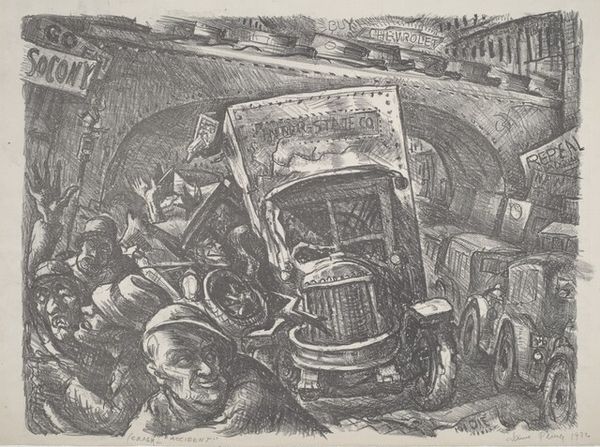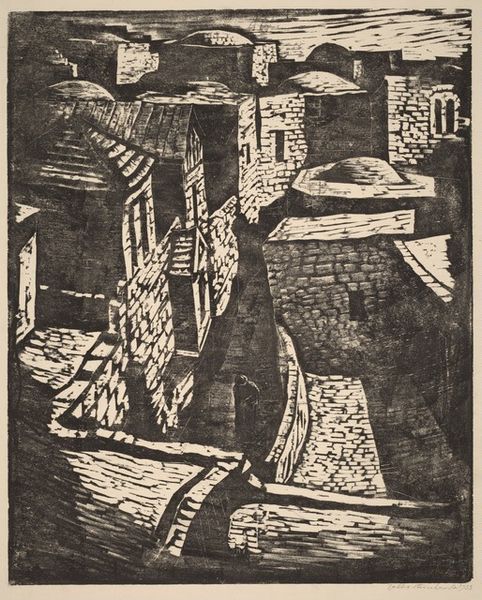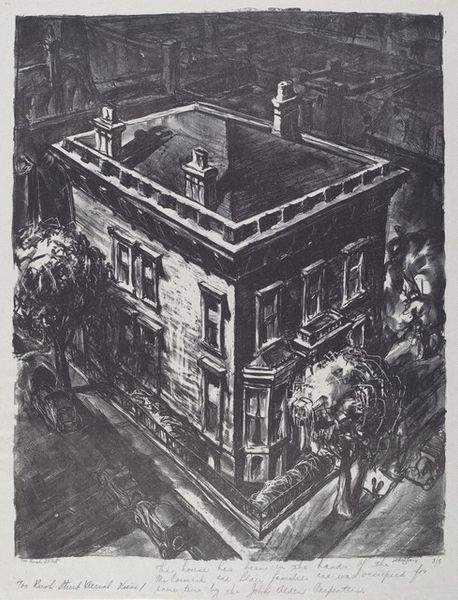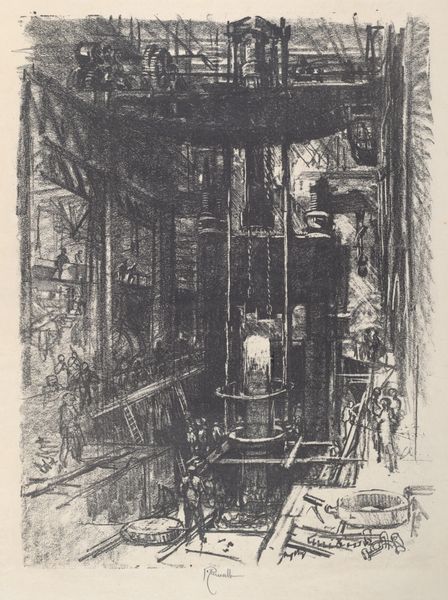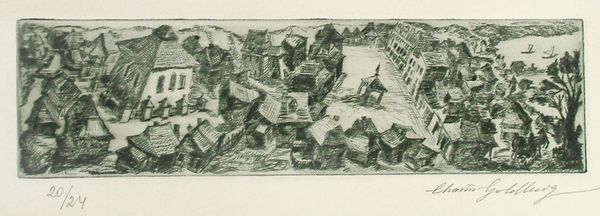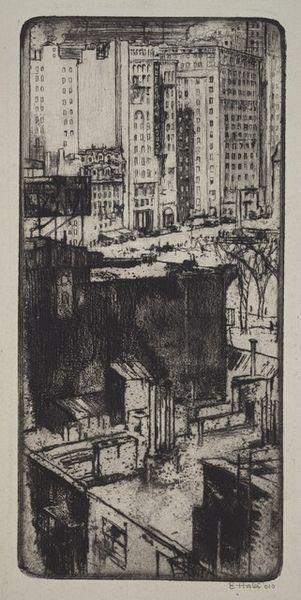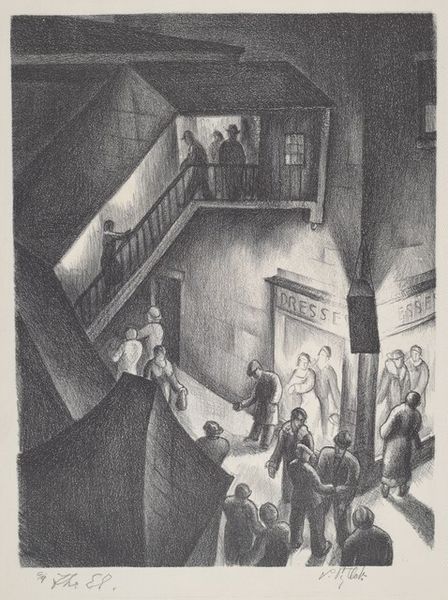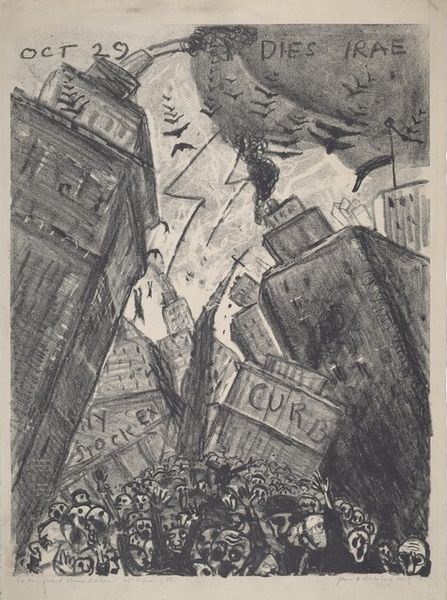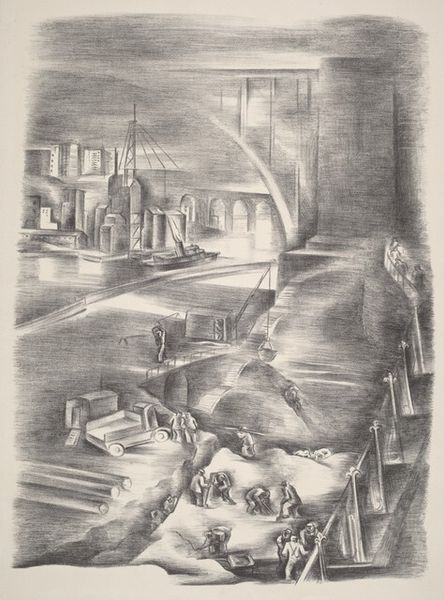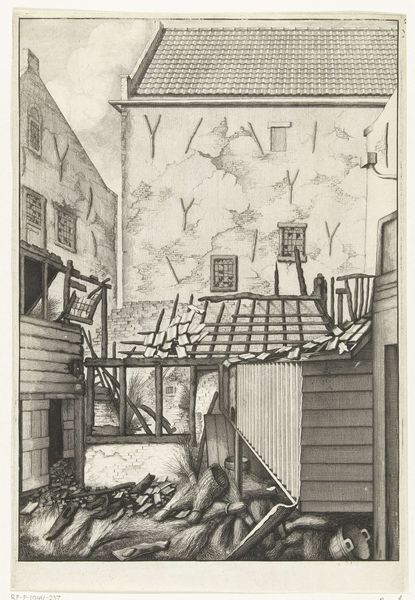
drawing, print, pencil
#
pencil drawn
#
drawing
# print
#
pencil sketch
#
pencil
#
cityscape
#
realism
Dimensions: Image: 340 x 260 mm Sheet: 435 x 318 mm
Copyright: National Gallery of Art: CC0 1.0
Editor: James Penney’s "Crosstown Street," created in 1932 using pencil, drawing, and printmaking techniques, presents a dense cityscape dominated by trucks and urban grit. It evokes a sense of industrial fatigue. What strikes you when you look at this piece? Curator: What captures my attention are the recurring rectangular forms—trucks, buildings—which speak to the rigid structure of urban life, its rhythms. Notice the signs barely legible—"Lunch," "Auction Co." These words, coupled with the anonymous figures working below, construct a symbolic space representing the collective energy of a society under pressure. Think about 1932; what cultural anxieties do you imagine were present? Editor: The Great Depression, of course. Makes me think about survival, work... a struggle for normalcy. Do the individual trucks represent individual struggles somehow? Curator: Potentially. Trucks themselves can symbolize progress, mobility. However, their congested arrangement creates a sense of blockage. This tension mirrors the psychological state of a populace facing hardship. The heavy reliance on words suggests anxieties of clarity and truth in a period of disorienting change. What purpose do you think is being served? Editor: Maybe documenting, or maybe emphasizing, the stark realities and how advertising became prevalent? How does that idea contribute to its cultural impact? Curator: Yes! By visually codifying the signs of its time, this piece becomes a potent document and symbol. It reminds future generations of the constant human struggle, that advertising’s prevalence is intrinsically linked to how people feel at that time and also wish to feel. How a culture chooses to present its image to itself and the wider world. Editor: It's incredible how one image can reveal such layers of social and psychological meaning. Thanks for helping me decode all of this! Curator: My pleasure. Understanding the iconography can bring us closer to grasping both the artist’s intentions and a deeper, shared history.
Comments
No comments
Be the first to comment and join the conversation on the ultimate creative platform.
